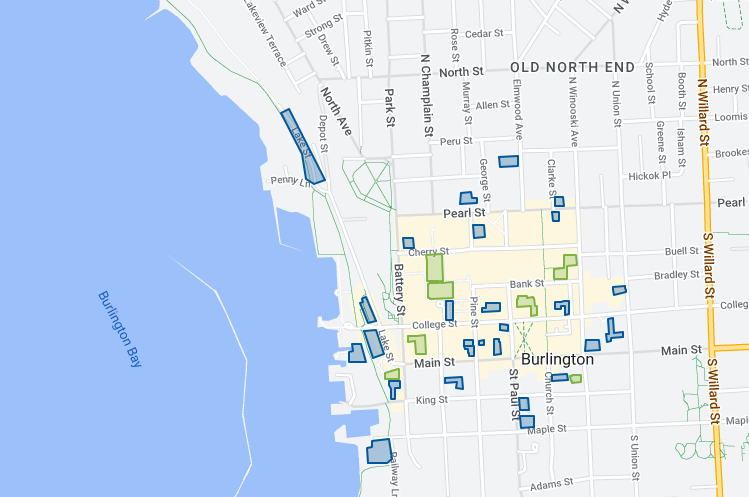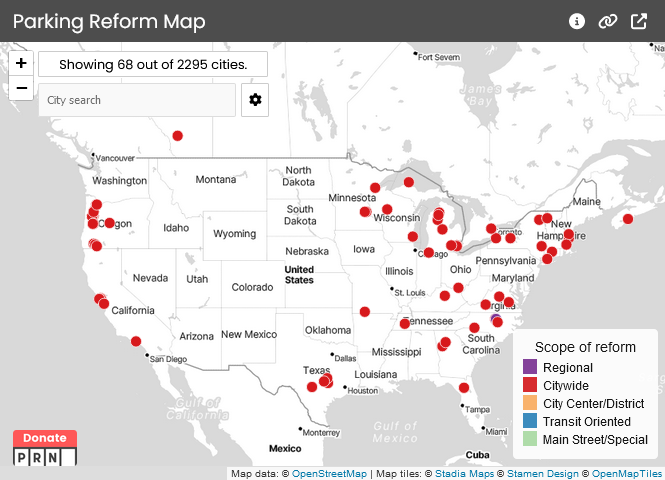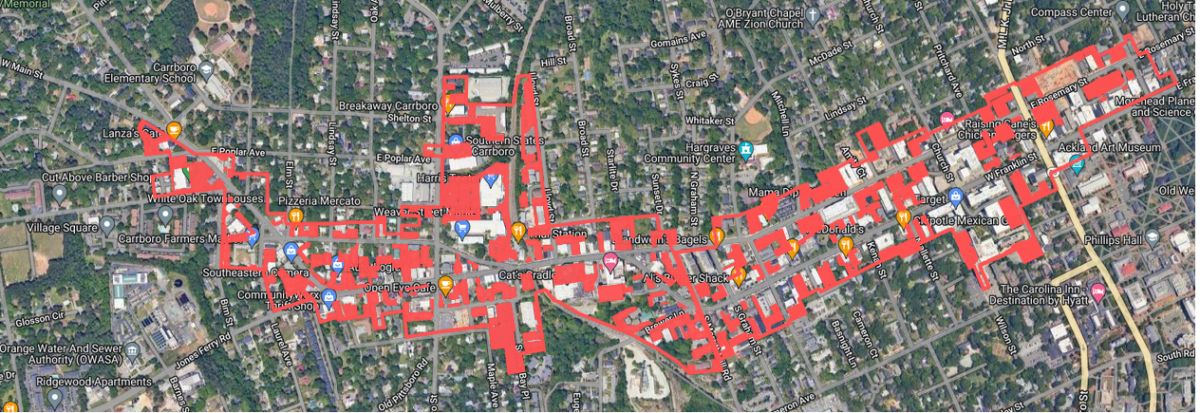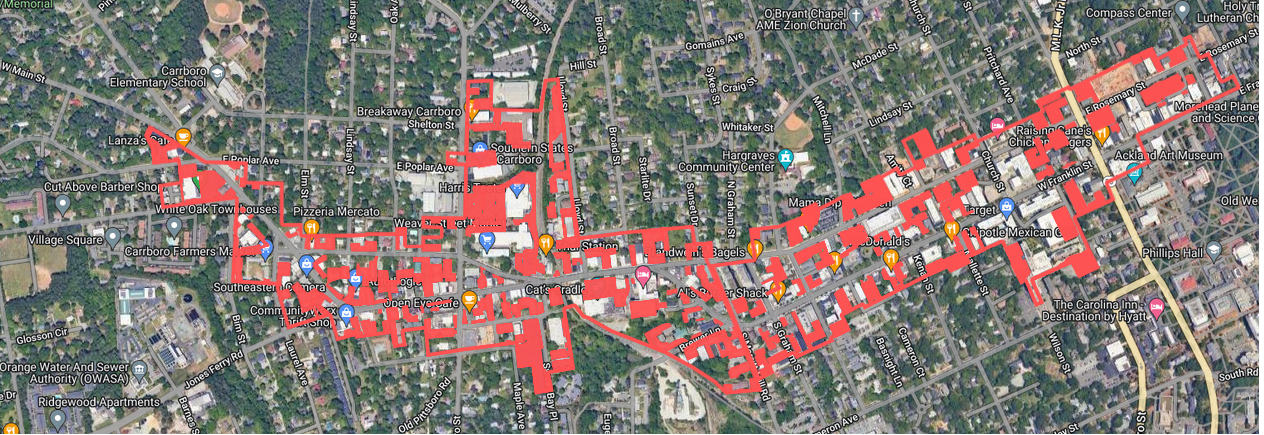Using a tool created by the Parking Reform Network, I calculated how much land in the downtown areas of Chapel Hill and Carrboro are dedicated to parking.
The downtown areas of Carrboro and Chapel Hill have more than 37% of downtown land dedicated to parking. That’s more than ⅓ of all of the land downtown.
You can view an interactive map of our downtown areas dedicated to parking here.
These boundaries were determined based on Carrboro’s Residential High Density and Commercial Overlay Zoning District, Town Center Business, General Business, and Fringe Commercial Districts and all Chapel Hill’s Town Center Zoning Districts as the boundaries.
The only includes surface lots, not on-street parking or the soon-to-be completed parking decks on Rosemary Street and adjacent to the new Carrboro branch of the Orange County Public Library.
Add those in, and almost half of our land downtown is dedicated to parking.
Why this matters
There are a few reasons why this matters: it means we’re not using land well, it’s bad for the environment, and it’s really expensive.
If you’ve ever been to Burlington, Vermont, you’ll see a vibrant downtown that looks a lot like Chapel Hill’s. But Burlington’s downtown is a fully pedestrian mall – cars aren’t allowed – and there are pop-up musicians, food carts, shopping, and seating that create a third space for their community.

This doesn’t mean Burlington doesn’t have parking – it does – but most of the parking is in garages, so they take up less of a footprint, and they are adjacent to, not on, their main downtown street.
The result is a space that feels like it’s designed for people on foot and bike – which means there are places to sit, eat, explore, and play without cars. (Employees of local businesses in Burlington park for free, and everyone gets some free parking – but after the free period ends, everyone pays. This ensures that there’s turnover and more people can access the local businesses they want to visit.)
Parking also takes up a lot of our space downtown. All of that space is expensive, and also encourages more driving.
Think about the way that the Tar Heel Express works. Chapel Hill Transit operates express buses from various park and rides, and takes people directly to men’s basketball game. This is a great way to help traffic in Chapel Hill. If the Tar Heel Express didn’t operate, thousands more cars would clog up area streets – causing congestion and making it more difficult to get around.
Providing safer and more frequent alternatives like bike lanes, bus service, and a more connected greenway network will change the way that some people get downtown. This doesn’t mean it will change for everyone – but fewer cars on the road will be better for everyone, whether you’re driving or on foot.
One study (Tolley 2011) found that “streetscape enhancements that improve walking and cycling conditions….increase local economic activity.” This confirms a body of research looking at the impact of bike lanes and creating pedestrian-friendly commercial districts which improve economic performance. Sales increase when sidewalks are expanded and bike and bus lanes are created, even if it reduces on-street parking (Sztabinski 2009).
Last November, Carrboro’s Town Council changed parking minimums for residences, but there’s still an opportunity to change the rules for commercial development. For instance, Pelicans Snoball in Carrboro can’t provide indoor seating – despite having ample room inside – because there aren’t enough parking spots in their lot. That doesn’t make sense when the location of Pelicans Snoball is easily walkable, and there are other lots nearby.

Eliminating parking mandates is a step forward for our towns to promote walkable and bike-friendly neighborhoods, and create more space for parks, public amenities, and community gathering spots. They would join Durham, Raleigh, and hundreds of other cities across the country.


